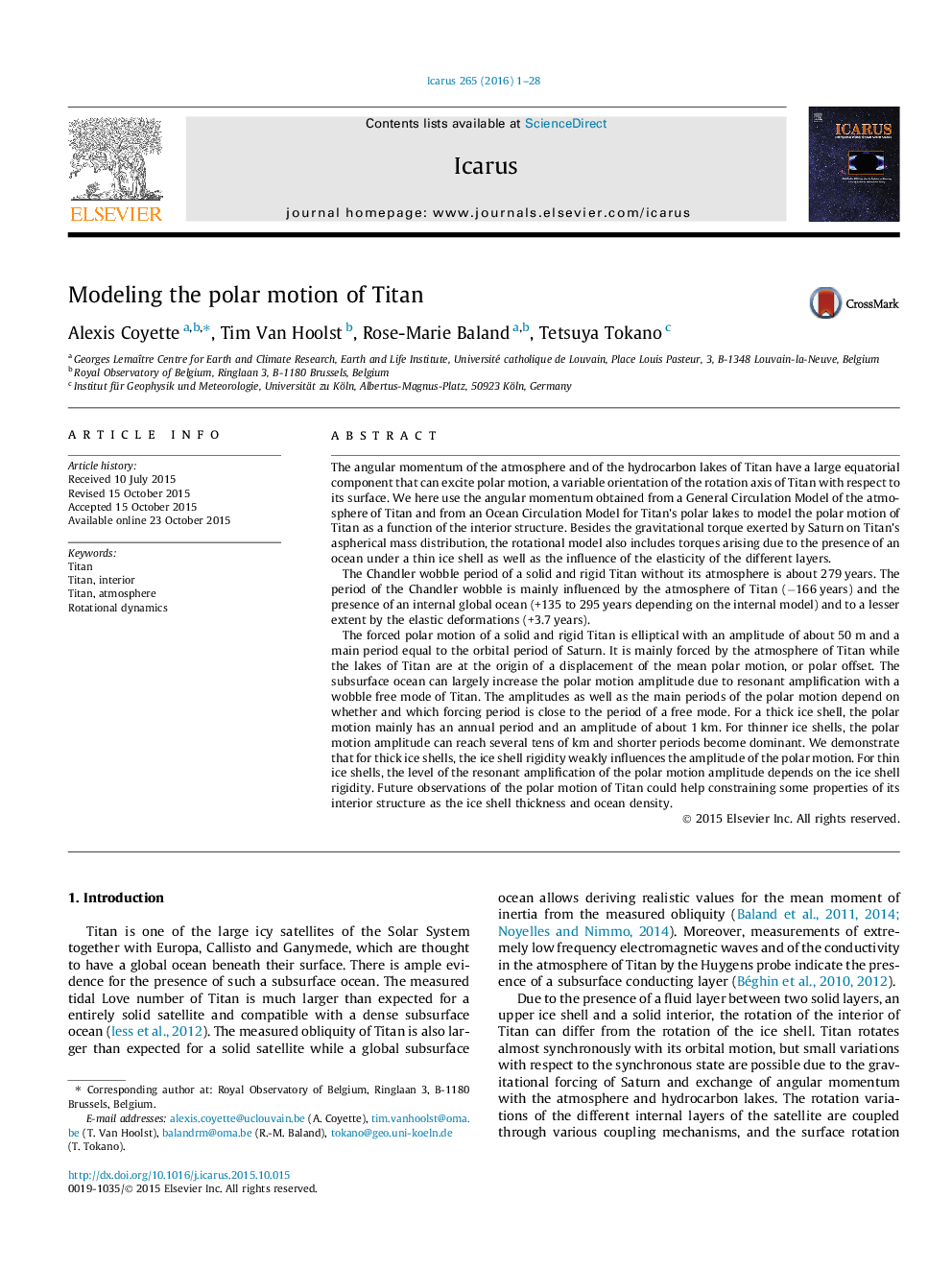| Article ID | Journal | Published Year | Pages | File Type |
|---|---|---|---|---|
| 8135745 | Icarus | 2016 | 28 Pages |
Abstract
The forced polar motion of a solid and rigid Titan is elliptical with an amplitude of about 50Â m and a main period equal to the orbital period of Saturn. It is mainly forced by the atmosphere of Titan while the lakes of Titan are at the origin of a displacement of the mean polar motion, or polar offset. The subsurface ocean can largely increase the polar motion amplitude due to resonant amplification with a wobble free mode of Titan. The amplitudes as well as the main periods of the polar motion depend on whether and which forcing period is close to the period of a free mode. For a thick ice shell, the polar motion mainly has an annual period and an amplitude of about 1Â km. For thinner ice shells, the polar motion amplitude can reach several tens of km and shorter periods become dominant. We demonstrate that for thick ice shells, the ice shell rigidity weakly influences the amplitude of the polar motion. For thin ice shells, the level of the resonant amplification of the polar motion amplitude depends on the ice shell rigidity. Future observations of the polar motion of Titan could help constraining some properties of its interior structure as the ice shell thickness and ocean density.
Related Topics
Physical Sciences and Engineering
Earth and Planetary Sciences
Space and Planetary Science
Authors
Alexis Coyette, Tim Van Hoolst, Rose-Marie Baland, Tetsuya Tokano,
